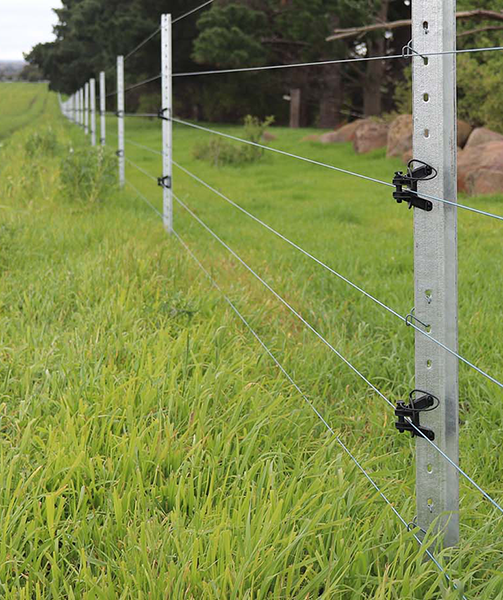Waratah Joins War on Wallabies
No, it’s not a discussion about Australian rugby teams. Waratah, the iconic Aussie fencing brand, has been enlisted to help in the battle against wallabies in the South Island.
The marsupials, native to Australia, were first brought to New Zealand in 1870, when Governor Sir George Grey released them on Kawau Island (north of Auckland). They were later introduced to other parts of the country, and they remain a problem in several areas, notably around Rotorua and in parts of the South Island.
To prevent their spread into sensitive areas like the Mackenzie Basin and Aoraki/Mount Cook National Park, Environment Canterbury (ECan) is building a 48km-long anti-wallaby fence along the western border of Canterbury’s wallaby containment area, from Lake Benmore through to Lake Tekapo.
ECan has worked closely on the project with Waratah Fencing, which has a wealth of experience with anti- wallaby fences in Australia. Brendon Crequer, New Zealand Sales Manager for Waratah Fencing, says there were some unique challenges involved with the Canterbury project.
One of them is the harsh South Island winter, which is not such an issue when building a fence across the Tasman. Also, much of the fence is in remote and difficult-to-access areas, making Waratah’s distinctive Australian-manufactured blue steel fence posts easier for transportation than bulky timber. “If you are moving 48km of timber fencing in there, it would be multiple truckloads, whereas you could move our products down the fence line quite easily and save quite a chunk of money,” Brendon says.
The rugged, rocky terrain in the area was also to Waratah’s advantage, due to the reduced installation costs of using steel fencing compared to timber, Brendon says. “If you think of a great big round strainer, trying to get that into a rocky environment, it takes a long time versus a smaller steel pipe.” The fence is only 1.3m high, and Brendon says wallabies “probably don't jump as much as people think they do”; the bigger problem is stopping them from pushing under the fence. “The fence that we've designed uses Waratah Longlife Blue® wire netting, which is installed to have a 30cm apron that lays flat on the ground and works as an added barrier to stop feral animals from digging under. This was particularly important as we had the added complication that it had to be rabbit-proof.”
Using premium steel fencing means that the ongoing maintenance costs should also be lower than for timber “because nothing moves”, Brendon says. With timber, everything moves, no matter how well it's constructed. It dries out, it gets wet, it warps, but that isn’t a problem for steel.”



